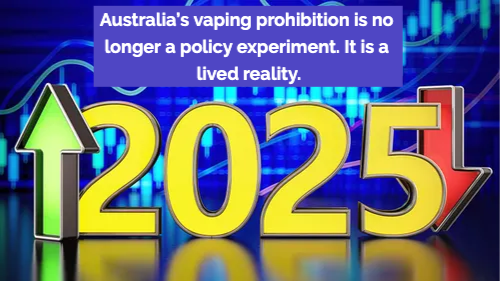Yet Another Anti-Vaping Echo Chamber: Why This “Community of Practice” Misses the Point
- Alan Gor

- Aug 10, 2025
- 2 min read

Alan Gor 10 August 2025
Yet another study by Michelle Jongenelis et al has been rolled out under the banner of “protecting young people.” Yet again, it’s less about science and more about preaching to the converted. The paper, titled “E-cigarette use in adolescents: prevention and cessation strategies from an Australian community of practice”, sounds impressive, but strip away the jargon, and it boils down to this: a closed group of like-minded professionals telling each other exactly what they already believe.
This so-called “community of practice” isn’t a diverse cross-section of experts engaging in open debate. It’s a hand-picked circle of anti-vaping advocates, many with a long history of opposing nicotine in any form. The study reads less like an impartial assessment and more like an internal memo, recycling the same ideological talking points that have dominated Australia’s public health messaging for years.
The authors don’t seriously engage with independent research or global harm reduction evidence. They ignore recent real-world data like Roy Morgan’s 2025 findings showing a rise in youth smoking rates following Australia’s vape crackdown in favour of framing vaping as an existential threat. International experience is brushed aside, even though countries like Sweden and New Zealand have achieved record-low smoking rates by integrating safer nicotine alternatives into their public health strategy, not banning them.
The inconvenient reality
While this “community” congratulates itself for “collaborating” on prevention, the real numbers paint a damning picture. According to AIHW data, daily smoking among 18–24-year-olds increased for the first time in decades after the federal government restricted vapes to pharmacies and banned retail sales. At the same time, black market vaping exploded, with unregulated, untested products flooding the streets.
In other words, the exact opposite of what was promised is happening.
Cigarettes, the most harmful nicotine product by far, remain freely available to anyone over 18 at nearly every petrol station, convenience store, and supermarket.
Vapes, which are far less harmful according to Public Health England, are forced underground and into criminal distribution networks.
Nicotine pouches, which have no combustion and arguably the lowest risk profile, require a prescription, making them virtually inaccessible.
The predictable consequences
Instead of steering young Australians away from smoking, this prohibitionist approach is pushing them toward it. By driving vaping into the shadows, the government has surrendered control over product safety, youth access, and accurate health information. This isn’t prevention — it’s harm maximisation.
Policy-based evidence-making
The bigger problem here is the method. This study is a textbook case of policy-based evidence-making: start with the policy you want, then gather a group of people who already agree with it, and finally present it as expert consensus. There’s no critical interrogation of opposing viewpoints, no acknowledgement of international success stories, and no consideration of the unintended consequences of their recommendations.
Australia’s nicotine policy is failing because it refuses to adapt to reality. Instead of confronting the fact that smoking is rising in young adults and the black market is booming, policymakers double down on restrictions, bans, and moral panic.
Until we replace ideology with evidence, these echo-chamber “studies” will keep appearing, and Australia will keep moving backwards on tobacco harm reduction.


